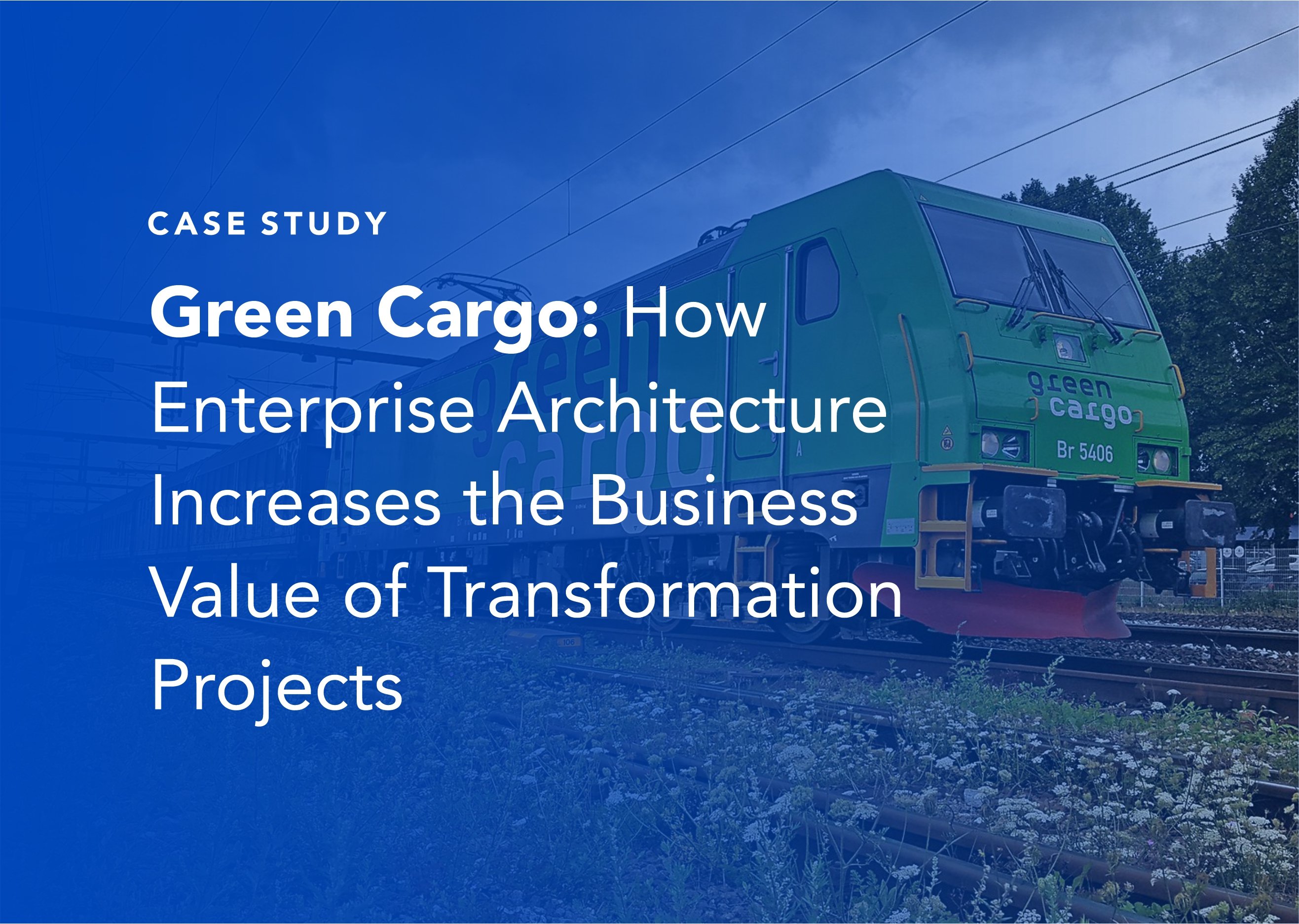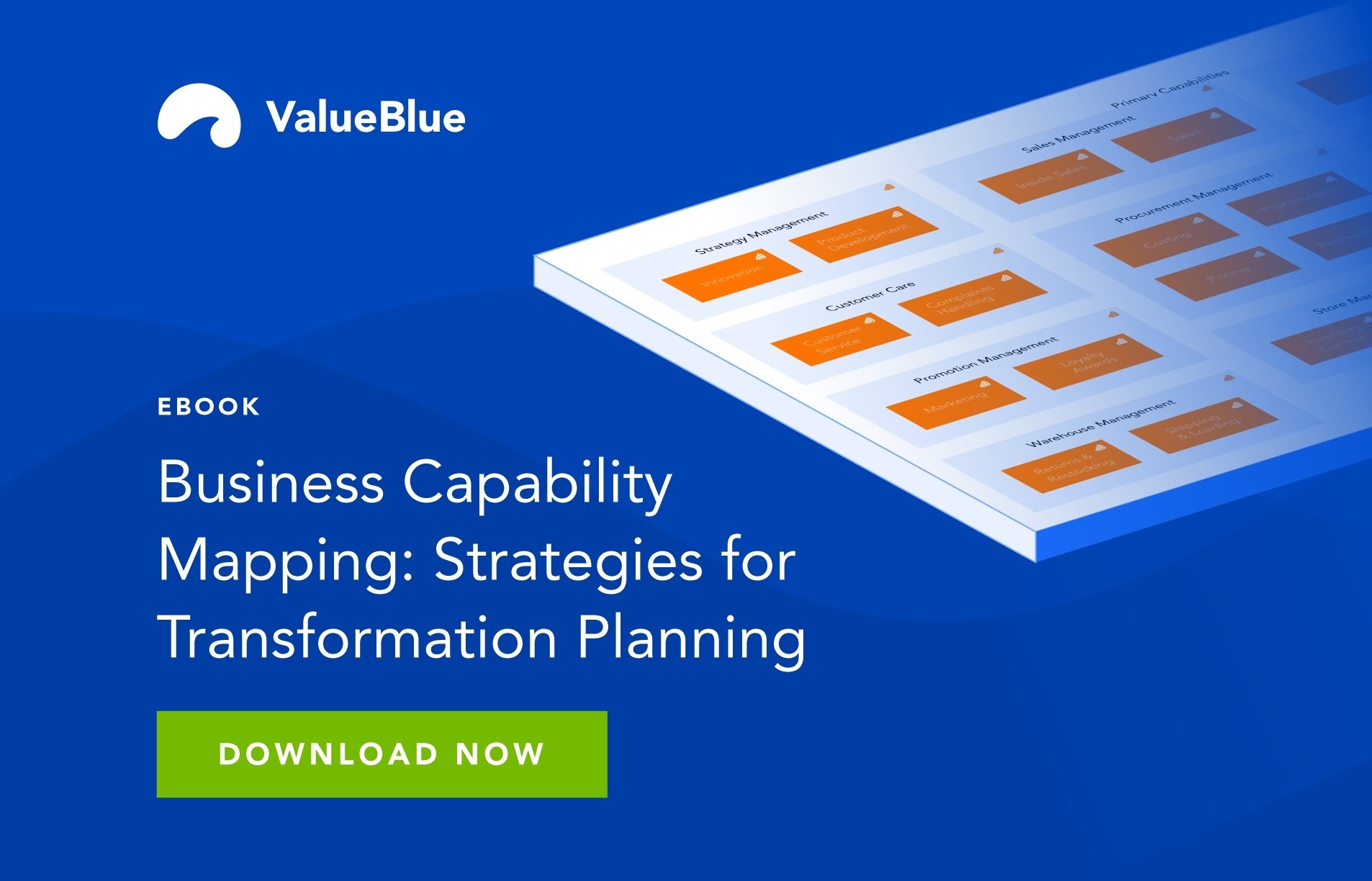Guide - Why a traditional Application Portfolio Management solution is no longer enough
Why a traditional Application Portfolio Management solution is no longer enough
The challenges faced by IT teams continue to grow, year over year. Technology leaders are responsible now for proactively ensuring that their application landscapes support the needs of the business in the most optimal way. This requires a pretty precise balancing act between functionality, cost, and potential risks.
Business value for today, future growth for tomorrow
Not only does the application landscape need to deliver more business value today, but it also needs to facilitate future growth and innovation for tomorrow.
Centralized information for better insights
The biggest hurdle we see time and time again is a lack of centralized information. The information exists, but it’s usually scattered across the organization, and there is no central communication channel.
Enter the new ValueBlue APM solution
The new ValueBlue Application Portfolio Management (APM) solution gives organizations the insight they need to support decision making. With this new solution, we are enabling APM in an entirely unique way.
Why Application Portfolio Management?
In the digital era, the myriad of software and technology continues to grow. For CIO, IT leaders and Enterprise Architects, the need for an optimized, agile and flexible application landscape has never been greater. Leaders and senior execs will be familiar with the often frustrating glorification of start-ups; with their nimble culture, agile methodology and ability to get things done with little bureaucracy. These ‘up-and-comers’ can be agile and effective in getting things done, fast. Larger companies, in contrast, can be seen as slow to adapt and lackadaisical in their response to changing markets. But while innovative start-ups come up with new ideas and execute them quickly, today’s global CIO has to help the business understand why this “just do it” approach won’t cut it for the larger organization – innovation and transformation simply takes longer and costs more as complexity grows. Mergers and acquisitions, disparate business units and global entities with individual approaches all contribute to application sprawl and technological complexity. IT leaders are left with a choice. Attempting to streamline in a way that allows the organization to compete with more agile competitors generally results in sacrificing your time-to-market, and can often mean opportunities are lost – things simply takes too long. Alternatively, standalone innovation or transformation teams can be put in place to execute at speed, but minimal integration with existing systems and processes ultimately leads to application sprawl in the long-run.
Managing an organization’s application portfolio has never been so challenging.
There must be a better way for companies to simplify a complex IT landscape and increase their organizational agility
CIOs and Architects turn to Application Portfolio Management (APM) practices as a means to optimize their technology landscape, rationalize spend and reduce risk.
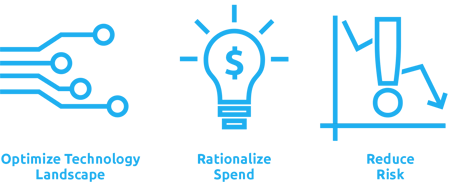
Traditionally, Application Portfolio Management focuses on certain core areas. Depending upon an company’s size and architectural maturity, one of the most obvious and common areas to start with is application rationalization. A study conducted by Infosys found that application rationalization efforts can lead to cost-savings of more than USD $2m in a single enterprise.
Functional consolidation, the optimization of software licensing (the average IT organization spends 13% of their IT budget on licensing) and Software Asset Management (SAM) tools are often seen as the face of Application Portfolio Management. But let’s be clear: cost reduction initiatives are only one part of the story.
Here’s why traditional Application Portfolio Management is no longer enough
Traditional APM approaches that focus solely on cost- or risk-reduction don’t give your organization the full picture.
Effective Application Portfolio Management is about much more than short-term cost reduction.
Progressive APM focuses on building an application landscape that enables the company’s entire business strategy.
Using business capability models, progressive APM allows CIOs and Architects to design future-state application portfolios that have a robust balance between cost and capability, the right mix of standard and differentiated capabilities, and the flexibility to respond to strategic pivots and facilitate future growth.
Do you recognize these common pitfalls of traditional Application Portfolio Management?
Without complete insight, APM will never deliver its potential value
The information-gathering phase of an APM practice traditionally creates challenges. Information is scattered across the organization – stored in Excel spreadsheets that are almost instantly out-of-date, or worse — between the ears of application owners!In efforts to deliver cost-savings quickly, organizations often find themselves cutting corners with their application data, lacking long-term governance processes and therefore end up repeating the discovery phase over and over again. When the data is this difficult to find and validate, teams are left to analyze incomplete information – so it’s unsurprising that key insights may be missed.This creates a vicious cycle. When APM delivers little in the way of actionable insights, the practice will certainly not be maintained or governed effectively.
External pressure to reduce cost takes over
“Far too frequently, IT organizations kick off a rationalization initiative in response to external pressure to reduce IT costs.” (Infosys)
While cost-cutting can lead to short-term benefits, there is often a long-term burden. With a laser-focus on budget, other application risk and attributes are overlooked, with no ownership of the application lifecycle and a potential for significant future technical debt. Portfolio flexibility and responsiveness is also not taken into consideration, leaving IT teams with an application landscape that may be lean on the budget but cumbersome operationally.
True Total Cost of Ownership (TCO) is unclear
Even with a cost-reduction focus, TCO isn’t always clear. Each layer of a software program or hardware system reveals increasingly complex cost associations. Application decisions are often made without a full understanding of the true cost it will incur or potential saving it will deliver. Making TCO clear to business leaders can assist IT with more effective decision-making when it comes to rationalization decisions and ongoing governance.
Time is precious; momentum is lost
The discovery phase is time-consuming, and many organizations tackle APM using inadequate or non-specialized tooling. With no clear version of ‘the truth’, data gathering can take far too long to yield minimal results. It is vital to streamline this discovery phase by using one central repository for application data that can be relied upon for completeness and accuracy. This way, architectural teams can move with momentum through the real process of APM, instead of getting stuck at square one.
Business and IT are not aligned on strategic objectives
To realize the true potential of an APM practice, the application landscape must be mapped against the business’s capabilities and processes, so that decisions can be taken that will deliver the greatest impact for the enterprise’s future ambitions. This requires alignment between IT, architecture and business leadership on strategic objectives, and the ability to clearly communicate APM insights to stakeholders at every level. Too often, APM is performed by IT in a silo, with some input from the business on basic application attributes, but little to zero strategic planning.
APM is treated as a ‘once and done’ exercise
Teams often view APM as a one-off exercise. This is not the case. Your initial APM approach will deliver real business value if executed effectively, but the long-term ROI comes from ongoing governance. Without clear purchase- and end-of-life processes for new and legacy applications in place, your portfolio will soon become bloated again. Maintaining application data allows IT to be proactive about real or potential risks and ensure business continuity. Do not put yourself in the position of needing to start the process from scratch again in 18 – 24 months.
“Application Portfolio Management has been an unloved discipline in IT for too long. But with legacy portfolios consuming an increasing amount of the IT budget, it’s time for application leaders to combine APM with other disciplines to realize results.” (Gartner)
Introducing the ValueBlue Application Portfolio Management solution
ValueBlue’s approach to APM takes organizations further than typical application rationalization and governance initiatives.
Application Portfolio Management is a core pillar of Business Transformation. It delivers vital input for strategic transformation management, and re-uses (or introduces) existing information from the organization’s enterprise architecture and business process management practices. ValueBlue delivers a solution for managing the application portfolio that is closely integrated with the organization’s enterprise architecture, and the delivery of its strategic future goals and initiatives. Thanks to clear and complete insight into the application landscape and its relationships with business capabilities, processes, functionalities and enterprise architecture policies and principles, IT teams enjoy multiple benefits.
✔ Functional overlap is identified and removed. This rationalization decreases budget spent on existing applications (and potentially opens up budget for transformation initiatives).
✔ Risky applications are identified and mitigated. Thanks to the complete overview of relationships between applications and business capabilities, processes, data & projects enables, insight can be derived into which capabilities, processes, data or projects are at risk at an application level, so you can prioritize where to act first.
✔ Application characteristics that facilitate future growth & expansion plans are identified. This supports the decision-making and creation of an overall optimized application landscape that allows for more flexibility, agility and faster innovation.
ValueBlue’s progressive Application portfolio management solution offers a number of core benefits thanks to the complete insight it delivers:

ValueBlue’s progressive Application portfolio management solution offers a number of core benefits thanks to the complete insight it delivers:
Strategic challenges solved
CHALLENGE
“Our data is incomplete and scattered across multiple sources.”
SOLUTION
Clear and complete insight
- A clear and complete overview of applications, capabilities and functions, and the processes which are using them – for improvement plans based on business value, business risk and functional fit.
- Accurate and up-to-date data that enables real-time analysis.
- Ability to assess organizational capabilities based on the current application landscape.
CHALLENGE
“Our data is incomplete and scattered across multiple sources.”
SOLUTION
Clear and complete insight
- A clear and complete overview of applications, capabilities and functions, and the processes which are using them – for improvement plans based on business value, business risk and functional fit.
- Accurate and up-to-date data that enables real-time analysis.
- Ability to assess organizational capabilities based on the current application landscape.
CHALLENGE
“Our data is incomplete and scattered across multiple sources.”
SOLUTION
Clear and complete insight
- A clear and complete overview of applications, capabilities and functions, and the processes which are using them – for improvement plans based on business value, business risk and functional fit.
- Accurate and up-to-date data that enables real-time analysis.
- Ability to assess organizational capabilities based on the current application landscape.
Tactical challenges solved
CHALLENGE
“We have limited insight into potential cost savings on applications.”
SOLUTION
Optimization of application cost vs. capability
- The optimization of application costs, ensuring the most effective balance of application costs against capabilities.
- Insight into overlapping functionality to help facilitate rationalization and consolidation.
CHALLENGE
“We don’t know which applications are end-of-life or pose security risks.”
SOLUTION
Risk identification and mitigation
- Minimizing risk posed by the application landscape – from a financial, security and regulatory perspective.
- Full insight into real and potential risks, and their effect on business capabilities.
- Ability to identify and mitigate process weaknesses caused by applications.
“We don’t have a clear view of our current landscape, so we cannot create effective future plans.”
SOLUTION
Complete data for roadmaps & improvement plans
- Ability to generate and visualize proposals for an improved future-state, based on business value, risk, and functional fit.
Operational challenges solved
CHALLENGE
“It takes too much time to gather and manage the data related to applications.”
SOLUTION
Time-saving collaboration capabilities
- Collaboration between IT stakeholders that have a role in managing data related to applications, such as vendor management, license management and service.
- Application data that can be recycled and re-used for transformation planning, project design and impact analysis.
CHALLENGE
“We’re missing a central dashboard or report that gives us one version of the truth.”
SOLUTION
A centralized overview for clear reporting and insight
- One central repository and the removal of siloes guarantees accurate and up-to-date application information.
ValueBlue’s unique enablers for progressive Application Portfolio Management
One central repository
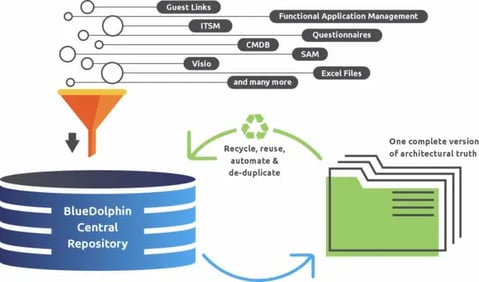 The first enabler is our central repository. It guarantees accurate and up-to-date data by stimulating collaboration across the organization – both within IT itself and across the other business functions. Multiple stakeholders contributing from multiple perspectives leads to more accurate and up-to-date information. By giving business users ‘skin in the game’ and making it easy for them with guest links, simple questionnaires and easy navigation, the central repository allows colleagues outside of IT to keep application information current. The integration of various modelling languages means architects can not only access the data, but use it directly in their work. In short:
The first enabler is our central repository. It guarantees accurate and up-to-date data by stimulating collaboration across the organization – both within IT itself and across the other business functions. Multiple stakeholders contributing from multiple perspectives leads to more accurate and up-to-date information. By giving business users ‘skin in the game’ and making it easy for them with guest links, simple questionnaires and easy navigation, the central repository allows colleagues outside of IT to keep application information current. The integration of various modelling languages means architects can not only access the data, but use it directly in their work. In short:
✔ Reduce time spent gathering data
✔ Forget Excel docs saved on hard drives or personal cloud storage
✔ No more out-of-date application lists
Archimate® and BPMN® compliance — integrate seamlessly with your architecture
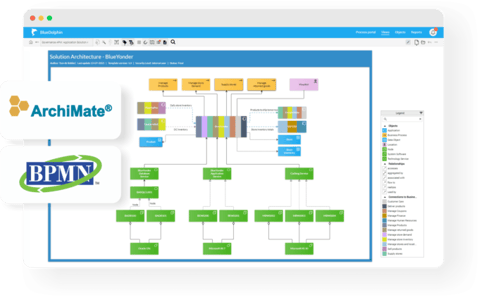 Another key enabler is our platform’s Archimate® compliance and modeling languages integration. This means that the input gathered from stakeholders across the business in any form: via guest linked questionnaires, software integrations and data imports and can then be quickly and directly linked to your architecture practice. Business users manage the data in the way that’s most comfortable for them, while architects get to work straight away using Archimate®.
Another key enabler is our platform’s Archimate® compliance and modeling languages integration. This means that the input gathered from stakeholders across the business in any form: via guest linked questionnaires, software integrations and data imports and can then be quickly and directly linked to your architecture practice. Business users manage the data in the way that’s most comfortable for them, while architects get to work straight away using Archimate®.
As you progress through the APM maturity phases and begin mapping applications to processes, the platform also facilitates integration with BPMN®.
A clear step-by-step approach
ValueBlue’s Application portfolio management solution has been developed using a very clear, step-by-step approach. Our goal is to guide you through the process and make it easy, achievable and truly valuable for every organization.
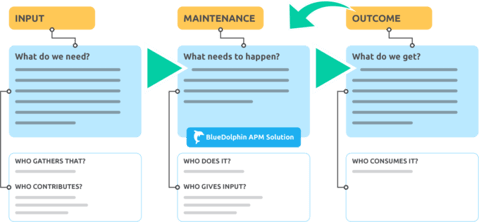 ValueBlue has developed standard implementation templates that can be used out-of-the-box for every phase of APM maturity, along with easy to follow step-by-step guidance for executing each stage.
ValueBlue has developed standard implementation templates that can be used out-of-the-box for every phase of APM maturity, along with easy to follow step-by-step guidance for executing each stage.
The solution walks you through the steps of APM, and at each phase of APM maturity tells you:
- How to gather the data — easily
- How to maintain the data
- How to analyze, identify the impact and achieve better outcomes
There are clear reporting templates for your own BI tooling, with dashboards that lay out what you need to know, so you can easily assess applications on risk, functional fit and more, in relation to business capabilities. All in all, these reliable steps lead to easy impact analyses and more successful and thorough APM.
The benefits, in short
Ultimately, the ValueBlue Application Portfolio Management (APM) solution helps your organization to achieve a more effective, secure and flexible IT landscape:
- Complete insight into the organization’s application portfolio
- Identify overlapping application functionality
- Rationalize and consolidate IT costs whilst ensuring key business capability continuity
- Assess real and potential application risk, and its impact on projects and initiatives
- Guarantee accurate and up-to-date data
- Select better fitting technology and ensure optimal cost-capability balance for your portfolio
- Make faster technology decisions
- Achieve transformation goals in a much more agile manner
.png)
